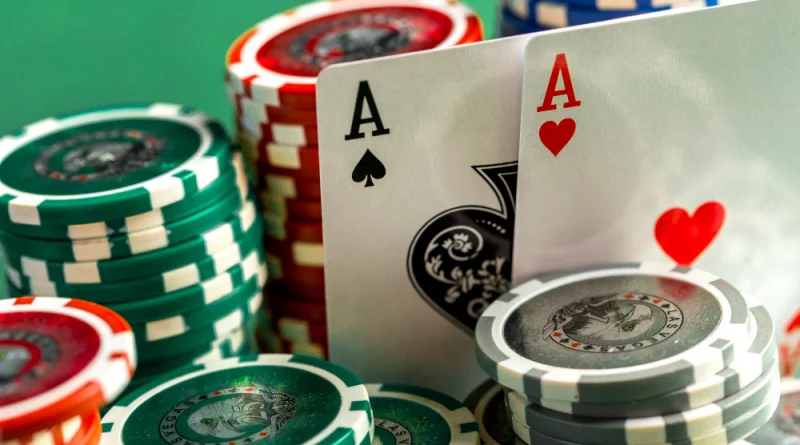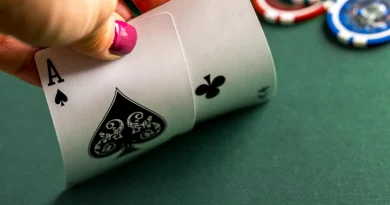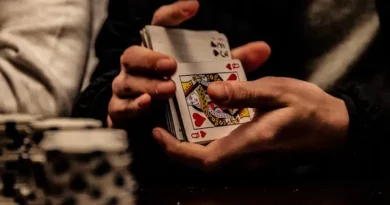How to play baccarat?
This article serves as a comprehensive guide to the game of baccarat. We’ll provide a deep dive into the rules, strategies, and how to go about playing online. Whether you have some experience or are a complete beginner, this guide should offer helpful information for players of any level.
Basic overview of baccarat gameplay
Baccarat traces its roots back to the 15th century in Italy, where it was known as “baccara”, meaning zero in Italian. The game gained popularity among the French nobility during the reign of King Charles VIII, and from there, it spread across Europe. Baccarat was embraced by the upper classes and became a favorite pastime in exclusive casinos. Baccarat is a comparing card game played between two hands: the player and the banker. The objective is to bet on the hand with a point total closest to 9.
The game is typically played with six to eight decks of cards. Each card has a point value: cards 2 to 9 retain their face value, while 10s and face cards (King, Queen, Jack) are worth zero, and the Ace is worth 1 point. The gameplay revolves around the player and the banker receiving two cards each. The hands’ point values are calculated by adding up the individual card values, but if the total exceeds 9, only the rightmost digit is considered (e.g., a hand totaling 15 is worth 5 points). A third card may be drawn under certain circumstances, following specific rules outlined in the game.
Different variations of baccarat
A classic game of baccarat can be enjoyed in a variety of ways. Punto Banco requires players to compare two hands – Player and Banker. In contrast, Chemin de Fer provides a comparative experience between players at the table, while Baccarat Banque and Baccarat en Banque feature an auctioned-off banker role. Conversely, Mini-Baccarat allows gamers with smaller stakes to benefit from faster-paced gaming. No matter which variant you choose, the goal always remains the same: having a hand with a point value closest to 9. Players need to understand the unique rules before they undertake baccarat so as not to be caught off guard.
Baccarat Rules: An In-Depth Understanding
Baccarat is a simple but exciting game, and to get the most out of it, you must understand the rules. This guide will provide an overview of the game’s main features, including objectives, card drawing, and ways to determine a winning hand. Knowing how to play baccarat can be beneficial for any aspiring gambler.
The objective of the game
Baccarat is a game in which players bet on the hand that will have a point total closest to 9. Bets can be placed on either the player’s hand, the banker’s hand, or a tie. When it comes time for scoring, the points accumulated by each hand are tallied and compared – the highest score up to 9 is declared the winner of the round.
Card values and point system
It’s important to understand the numerical values associated with each card in a baccarat game. Cards from 2 to 9 have their original face value (2 = 2 points, 3 = 3 points, etc.), while 10s and face cards (King, Queen, Jack) are worth 0 points. The Ace holds a special significance; it has a value of 1 point.
Dealing and drawing rules
When neither the Player nor Banker has a natural, and the Player has chosen not to draw a third card, the Banker’s decision is made using a more complex set of rules. In short, the Banker will always draw on totals of 0, 1, or 2, and stand on 7, 8, or 9. When the Banker’s hand totals 3, 4, 5, or 6, the decision of whether to draw or stand is dependent on the Player’s third card. The following chart outlines the Banker’s decision-making in these cases:
| Player’s Third Card | Banker’s Total | Banker’s Action |
|---|---|---|
| Not Applicable | 0 – 5 | Draw |
| Not Applicable | 6 – 7 | Stand |
| 2 or 3 | 0 – 4 | Draw |
| 4 or 5 | 0 – 5 | Draw |
| 6 or 7 | 0 – 6 | Draw |
| 8 | 0 – 2 | Draw |
| Ace, 9, 10, or Face-Card | 0 – 3 | Draw |
| Not Applicable | 4 – 7 | Stand |
Payouts and house edge
In baccarat, betting on the player’s hand or the banker’s hand pays out 1:1; however, a 5% commission fee is taken if a bettor selects the banker’s hand and wins. Bets of tie winning can pay at 8:1 or 9:1 odds. It is worth noting that this type of bet carries a higher house edge in comparison to bets placed on either the player’s or bankers’ hands.
Baccarat Strategy: maximizing your chances of winning
Although luck plays a major role in baccarat, implementing certain strategies can help improve your chances of success. In the following section, we will explore various aspects of baccarat strategy and help you make better decisions while playing. While it’s true that no strategy can guarantee consistent wins, familiarizing yourself with basic betting techniques will certainly enhance your overall experience at the table.
Popular betting systems
When playing baccarat, it is important to be aware of certain betting strategies such as Martingale and Paroli. Martingale involves doubling the bet after each loss with the goal of recovering past losses from a single win. Conversely, Paroli relies on positive progressions which increase wagers following a win. While these systems may seem appealing, they should be approached with caution and clear betting limits need to be established in order to avoid excessive losses.
Money management tip
It’s important to maintain good money management when playing baccarat. You should set limits on how much you’re willing to lose and follow through with them, so as to minimize any potential losses. Establishing a winning goal is also beneficial; once you reach it, take the winnings and call it a day. Finally, avoid chasing losses no matter what. Having a good bankroll strategy and following it is essential if you want your experience with baccarat to be both enjoyable and sustainable.
Tips for playing as the player
When wagering on the Player’s hand, it is important to be aware of its higher house edge; yet, streaks and trends should not be ignored either. If the Player hand appears to gain a consecutive victory, you may opt for continuing this pattern until there is variation. Nonetheless, remember to employ caution when playing as odds may vary throughout the game.
Evaluating the tie bet
The Tie bet may offer an enticing payout, but it comes with a significantly higher house edge. It’s generally advised to avoid placing frequent bets on the Tie due to its unfavorable odds. While a rare Tie bet win can be profitable, the long-term value lies in the Player and Banker bets.
Analyzing the House Edge
Getting acquainted with the House Edge is essential if you want to figure out your probability of success. In baccarat, the house edge on a Player bet is around 1.24%, while the Banker bet has a slightly lower advantage of 1.06%. Meanwhile, for the Tie bet – its associated house edge is much higher at 14.4%. Keeping this in mind allows you to make wise betting decisions and pick wagers that give you better odds. Even though by using sensible strategies and managing your bankroll well you can increase your chances of winning, it is important to understand that baccarat is primarily a matter of luck and strategy cannot guarantee continuous victories. So, focus on having fun playing this fascinating casino game rather than chasing profits and setting strict limits when it comes to betting in order not to exceed your budget!
Layout and components of a baccarat table
A baccarat table is quite organized. With designated areas for Player, Banker, and Tie bets, the symmetrical layout makes it easy to understand for all players. The dealer stands in the center of the table surrounded by several positions that are meant for placing bets. Depending on the casino, there may also be side bet markings or areas used specifically for card placement during gameplay. All these features make sure gameplay runs smoothly while providing high visibility to everyone participating.
Placing bets and dealing procedures
In baccarat, a betting period will be announced before the cards are dealt. Players can wager on either the Player or Banker position by placing their chips in the designated betting areas. Both hands will receive two face-up cards and additional cards may be dealt at certain intervals according to pre-established rules based on hand totals. The dealer must follow predetermined drawing protocols to complete the deal and determine a winner.
Seeking an answer to is counting cards illegal? Dive into our detailed guide to find relevant information,
Reading the Scoreboards
Baccarat tables often feature scoreboards to aid players in tracking the outcomes of previous hands. The Big Road and Big Eye Road are two main scoreboards; the former shows various rectangular boxes with a Player win (P), Banker wins (B), or Tie (T) outcome, while the latter utilizes dots to display patterns and trends in the game. Additional scoreboards such as Small Road, Cockroach Road, and Bead Plate might also be employed, giving players more visual cues with which they can make informed betting decisions. By employing pattern recognition strategies or analyzing historical results, players may utilize these scoreboards to their advantage.
FAQ
Baccarat is a card game where players bet on which hand – the Player or the Banker – will end up with a point total closest to 9. It’s a game of chance more than strategy, popular in casinos worldwide.
Cards from 2 to 9 retain their face value, 10s and face cards are worth zero points, and Aces are worth 1 point. The value of a hand is calculated by adding the value of the cards, but if the total equals 10 or more, only the rightmost digit is considered. So, a hand totaling 15 is worth 5 points.
Both the Player and the Banker receive two cards. Sometimes a third card might be drawn. The goal is to bet on the hand that will end up with a point total closest to 9. You can also bet on the possibility of a tie.
Dealing and drawing rules refer to guidelines on how and when the Player or the Banker can draw additional cards. For instance, if neither the Player nor the Banker has an 8 or 9 (a ‘natural’), the play continues. If the Player’s total is less than or equal to 5, they draw a card, and if it’s more than 5, they stand (no more cards are drawn). Whether the Banker draws a card next depends on their own hand total and the Player’s third card.
The house edge is the built-in advantage the casino has over the player. In baccarat, the house edge is approximately 1.24% on Player’s hand bets and around 1.06% on Banker’s hand bets. However, since a 5% commission is charged on winning Banker’s hand bets, the actual edge on these bets is slightly increased. The house edge on tie bets is significantly higher, typically around 14.4%.
Card counting in baccarat is technically possible but not nearly as effective as in some other card games like blackjack. Baccarat is predominantly a game of chance, and while counting cards can provide some insight, it is generally considered to be too effort-intensive to offer a substantial benefit in a game where the deck is reshuffled frequently.




